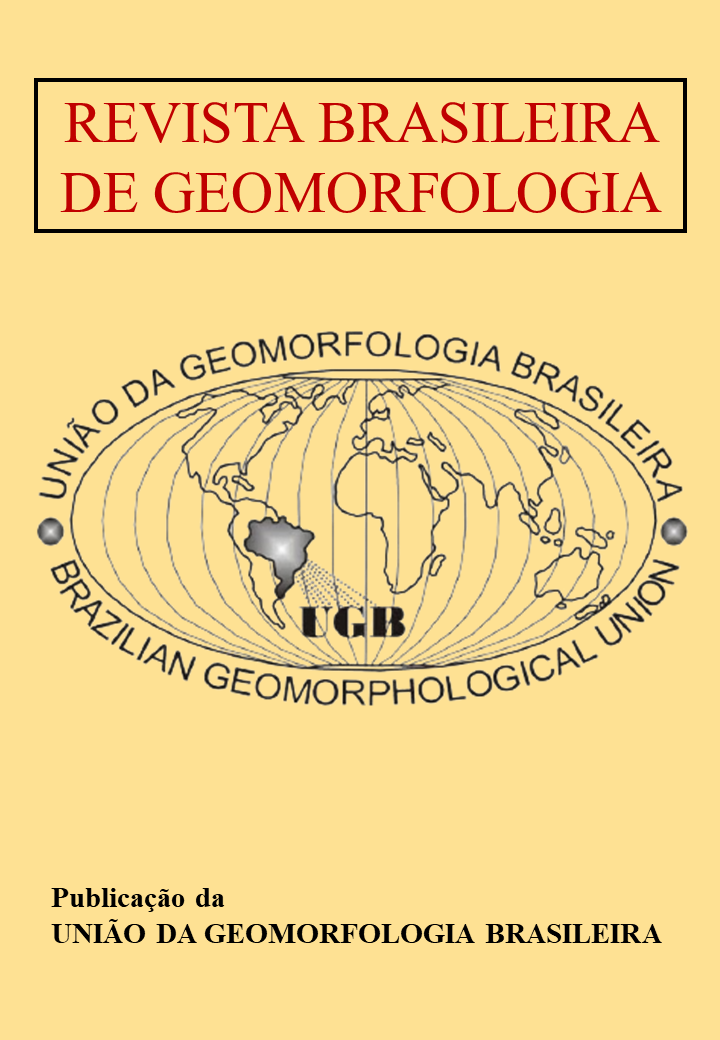Five decades of morphological evolution and hydro-sedimentary interactions in a fluvial confluence in the Brazilian Cerrado
DOI:
https://doi.org/10.20502/rbg.v26i2.2623Palavras-chave:
Araguaia River, Fluvial Geomorphology, ADCP, BathymetryResumo
: River confluences are zones of intense hydro-sedimentary interaction whose morphological dynamics remain poorly understood in tropical environments, especially in the Cerrado biome. This study investigates the morphodynamic transformations at the confluence of the Araguaia and Vermelho Rivers in Aruanã (Goiás, Brazil), over 51 years (1972–2023). The study integrates remote sensing data, bathymetry, and acoustic profiling. Riverbanks, thalwegs, sandbars, junction angle, and channel width were mapped, along with the calculation of hydraulic and geomorphological parameters. The results reveal high planimetric mobility, with junction displacement of up to 2.5 km, a 27° reduction in the confluence angle, and intense fluctuations in the configuration and area of fluvial bars. The confluence was characterized by a retreat between the 1970s and 2000 due to the erosion of part of the floodplain; then an advance of the confluence was observed in the period from 2000 to 2023, driven by formation and consolidation of the tributary bar. The dominance of the Araguaia River influences the scour zone position and thalweg configuration. Differential bank erosion was observed, conditioned by the morpho-sedimentary units of the floodplain, as well as colonization of the tributary bar by vegetation, promoting temporary stabilization. It is concluded that the adjustments in the confluence morphology result from an interaction between the seasonal hydro-sedimentary regime, bank lithology, and migration of fluvial forms, highlighting a dynamic system that is sensitive to changes in land use and land cover.
Downloads
Downloads
Publicado
Como Citar
Edição
Seção
Licença

Este trabalho está licenciado sob uma licença Creative Commons Attribution-NonCommercial 4.0 International License.
Autor(es) conservam os direitos de autor e concedem à revista o direito de primeira publicação, com o trabalho simultaneamente licenciado sob a Licença Creative Commons Attribution que permite a partilha do trabalho com reconhecimento da autoria e publicação inicial nesta revista.










